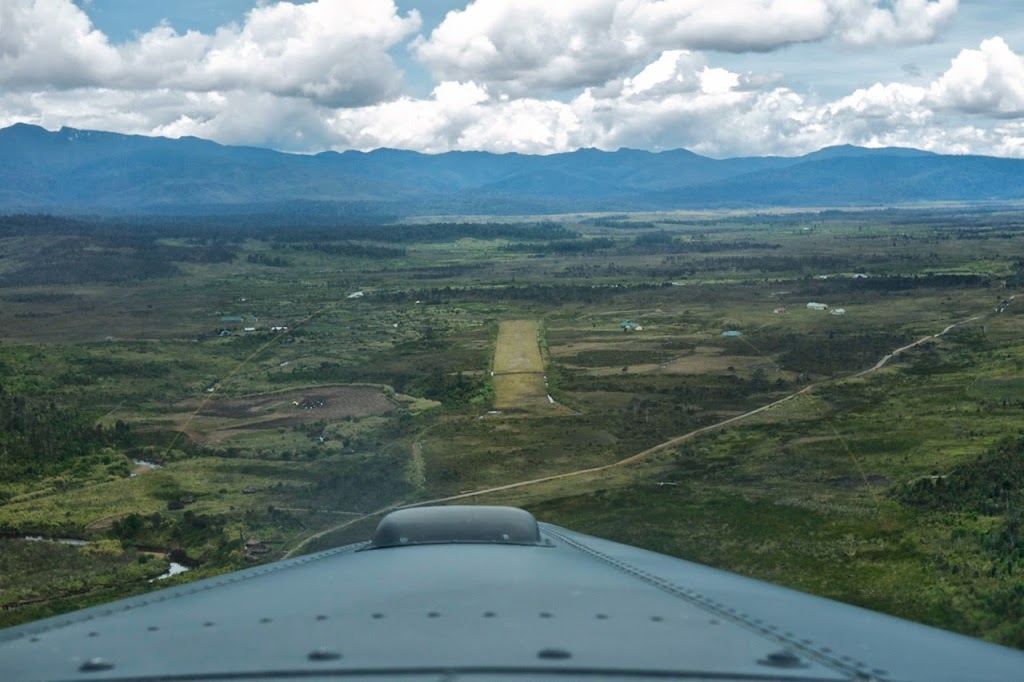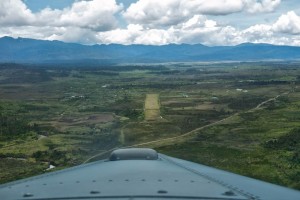 |
| Final approach into Agadugume, Papua |
Runway statistics
Orientation: 05/23
Length: 400m usable
Elevation: 8700ft
Slope: 0%
Surface: compacted dirt/stones with short grass
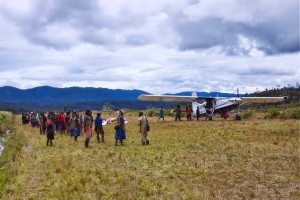 |
| Pilatus PC-6 unloading in Agadugume, Papua |
Pilot notes
Papua’s high plateau is just that, a fairly flat expanse of land, nestled to east of Ilaga and surrounded by even higher mountain ridges. Because of this, the weather around Agadugume usually allows flight operations from early morning, late into the afternoon. It’s best not to arrive too early as low lying ground fog can often cover the entire high plateau until 8am local time. Later in the morning and through into the afternoon, the winds can pick up a bit but not to the extent to prevent a safe landing. Due to the fact the airstrip is approachable from either direction, you can always land into the wind, abet usually with a bit of a crosswind component.
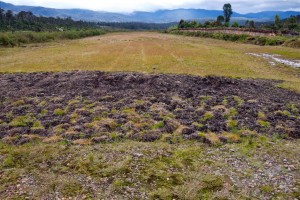 |
| Mound at the start of Agadugume airstrip, Papua |
 |
| Garmin G950 showing 8700ft on the ground in Agadugume, Papua |
The main thing to look out for at Agadugume is the departure. The Pilatus AFM (Aircraft Flight Manual) only specifies performance figures for up to 6000ft, above that and you’re on your own with regards to how much runway you’ll use for take-off and landing. Those performance figures are also designed around the maximum weight of 2800kg which of course you are almost never at when departing a mountain airstrip, having dropped off your load; the most you’ll usually have are a few passengers.
In reality, with only 400m of usable runway available, even the Porter can’t take-off at maximum take-off weight from Agadugume. And if you are operating there later in the day, the outside air temperature gets up to ISA+22C which is also over the AFM’s performance figures which only go up to ISA+20C. So, all this adds up to operating the aircraft based on experiences; both your own and other fellow pilots.
Five to six passengers are about the most I’ll happily take out of Agadugume with a standard fuel load to get back to Timika with reserves. You really notice the performance drop off when accelerating down the airstrip on departure. Usually when you advance the power lever in the PC-6, there’s a distinct shove in the back follow by decent acceleration allowing you to raise the tailwheel shortly afterwards and then climb out. From Agadugume there’s none of that, just a gentle acceleration towards the not very far away looking end of the runway.
The climb-out in both directions is free from any obstructions, so there’s nothing to be concerned with there other than the cloud build-ups on the ridges you need to clear before you’re out onto the southern flatlands before descending back towards Timika.
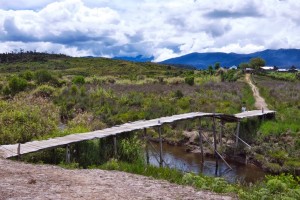 |
| Footbridge in Agadugume, Papua |
Everything written in this article are opinions of the author and should not be taken as sole reference for attempting a flight into or out of the aforementioned airstrip.
Discover more from Matt Dearden
Subscribe to get the latest posts sent to your email.
